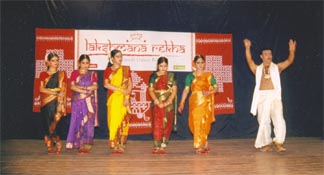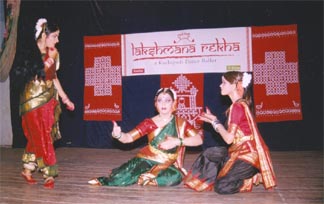Apr 23, 2024
Apr 23, 2024
by Usha Raman
 Lakshmana rekha - the boundary line drawn by Lakshmana for his sister-in-law Sita (wife of Rama, the mythological figure worshipped by many Hindus) to remain within - has over the years come to mean a `protective' barrier beyond which a woman should not stray. Feminists argue that the line is actually a wall that is built to control and confine women within the established power relations of a patriarchal society.
Lakshmana rekha - the boundary line drawn by Lakshmana for his sister-in-law Sita (wife of Rama, the mythological figure worshipped by many Hindus) to remain within - has over the years come to mean a `protective' barrier beyond which a woman should not stray. Feminists argue that the line is actually a wall that is built to control and confine women within the established power relations of a patriarchal society. The ballet begins with an invocation to women who led the struggle against patriarchy - Durgabai Deshmukh, Savitribai Phule (both social workers and women's rights activists from Maharashtra, and several others. It then explores the passive resistance offered by mythological heroines from the Ramayana (Sita and Urmila) and Mahabharata (Draupadi and Gandhari) and Renuka (mythical sage Jamadagni's wife who was beheaded on her husband's orders).
The ballet begins with an invocation to women who led the struggle against patriarchy - Durgabai Deshmukh, Savitribai Phule (both social workers and women's rights activists from Maharashtra, and several others. It then explores the passive resistance offered by mythological heroines from the Ramayana (Sita and Urmila) and Mahabharata (Draupadi and Gandhari) and Renuka (mythical sage Jamadagni's wife who was beheaded on her husband's orders).
25-Apr-2004
More by : Usha Raman